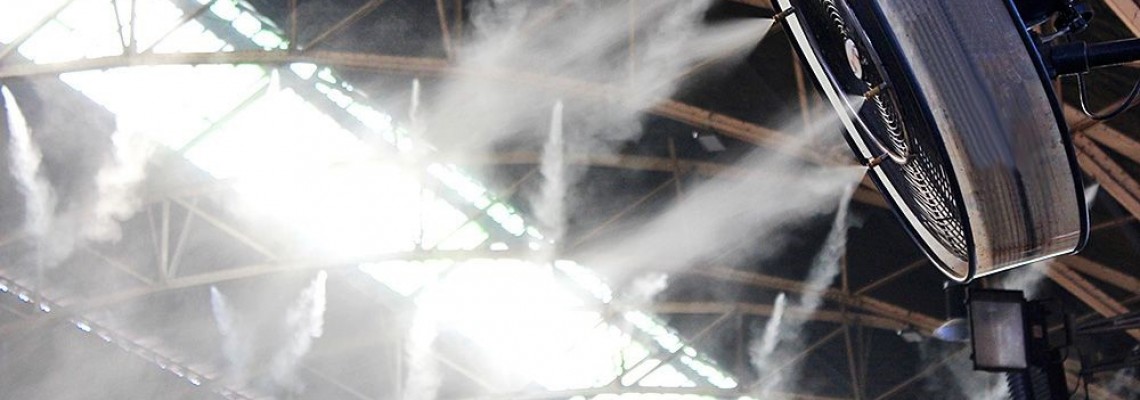
Combating dust in industrial premises with fogging systems

Dust suppression by fog systems in industrial premises is a very important task today. Industrial dust is formed during the processing of materials.
The elimination of dust particles from the air is mandatory according to technology in such industries as: woodworking, foundry, engineering, glass, ceramics, production of fabric and yarn in printing houses and others, where in the process production of products, dust occurs.
Problems that arise in production with an increase in the concentration of dust in the air:
1. Equipment wear accelerates, which leads to breakdowns, additional preventive measures and downtime.
2.Failures of control systems of production units, as an increased amount of dust enters the electronic control units.
3.Occurrence of a critical general sanitary state of the production environment. Because of this, the level of work of qualified personnel decreases and associated diseases and occupational diseases of workers arise.
The most cost-effective way to combat dust in industrial premises, where dust sources are constantly present today are fogging systems.
This method of dust control is based on water spraying.To date, this method has become the most effective not only from an environmental point of view, because the cost of energy costs for dust removal using traditional aspiration systems will not leave a chance to earn additional profit for your company, and humidified air has a positive effect on labor productivity and the health of workers.< /p>
Fogging systems are installed in paint shops, quarries, mines, stone crushers, in places with free flow, on conveyor belts, loading ramps, in places where trucks are unloaded. They are also used to capture dust generated by steel and cement plants, dust in ship loading and unloading areas, mines, rock and coal storage facilities, and processing plants.
System modules are installed in places where substances fall under the action gravity, where the highest concentration of harmful dust particles is recorded.

The benefits of using airborne dust suppression fogging systems in industrial plants and production halls:
- Performance improvement. While maintaining a comfortable dust-free microclimate, the productivity of personnel increases, the percentage of defective products and equipment breakdowns decreases.
- A healthier work environment. Fatigue is reduced, attentiveness is increased, the factor of industrial injuries caused by a high concentration of dust in dry air is reduced.
- Humidification of the air.Healthier mucous membranes and stronger immunity in workers.
- Reduce dust and gas and smoke emissions. Thanks to the dust suppression effect built into the systems, which captures the floating dust and substances in the air.
- A cost-effective solution when compared to industrial air conditioning and aspiration systems.
- The ability to locally deal with sources of dust from industrial processes or equipment.
- Improve profitability - increase revenue by optimizing manufacturing processes. Reduce maintenance costs and maintain general order and cleanliness.
Fogging systems are one of the most effective dust control solutions. Dry particles of a substance suspended in the air are so small and light that they can hang in the air for a long time, and after settling rise again at the slightest breath of wind. The fogging system creates fine water mist with an average droplet size of 7 to 30 microns. (which is the most optimal size for most dust sources).
Dust microparticles in contact with water drops get wet, which leads to "sticking" i.e. dust particles form conglomerates with a much greater weight, which leads to dust settling and further makes it difficult to suspend it in the air

Leave a Comment